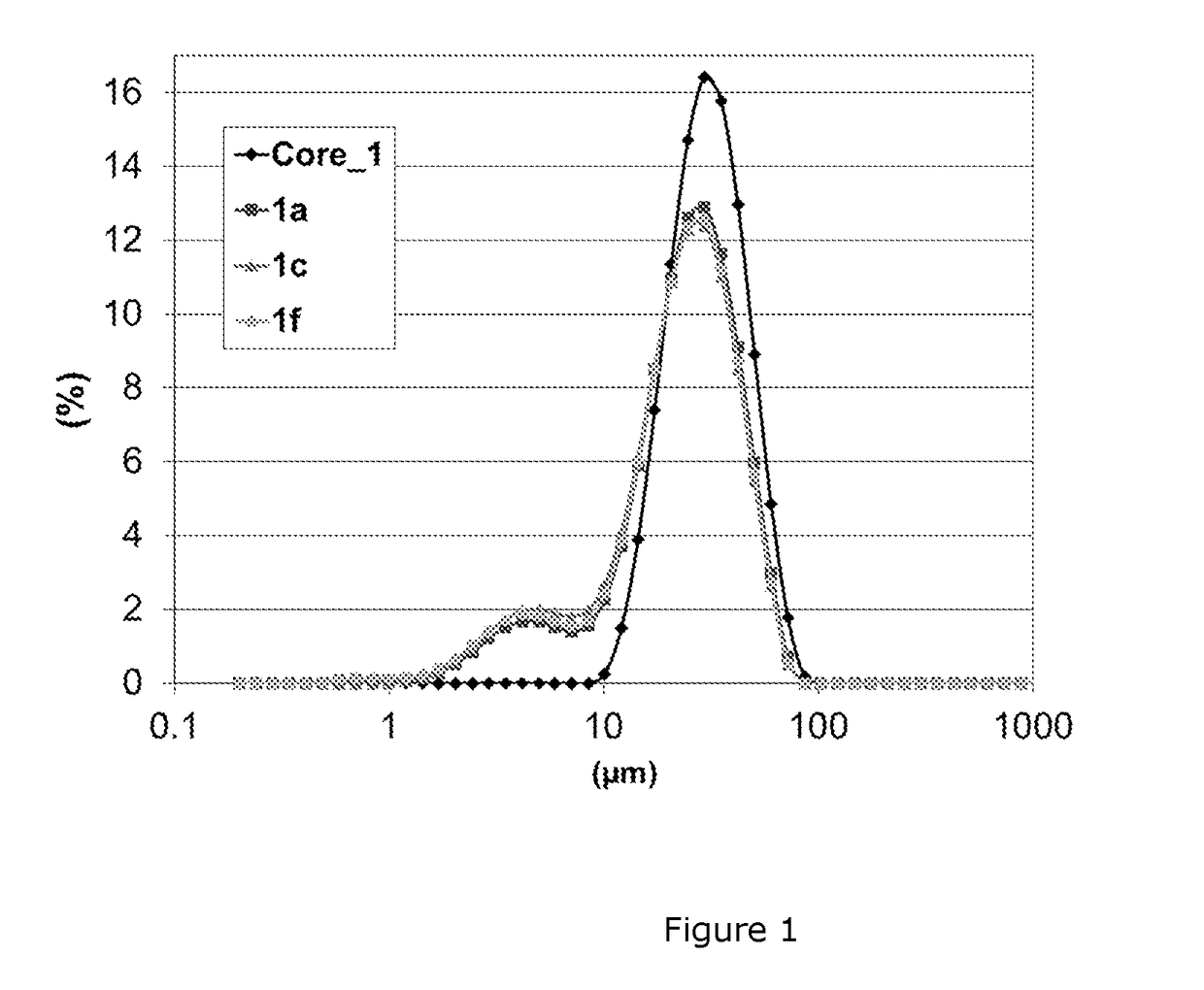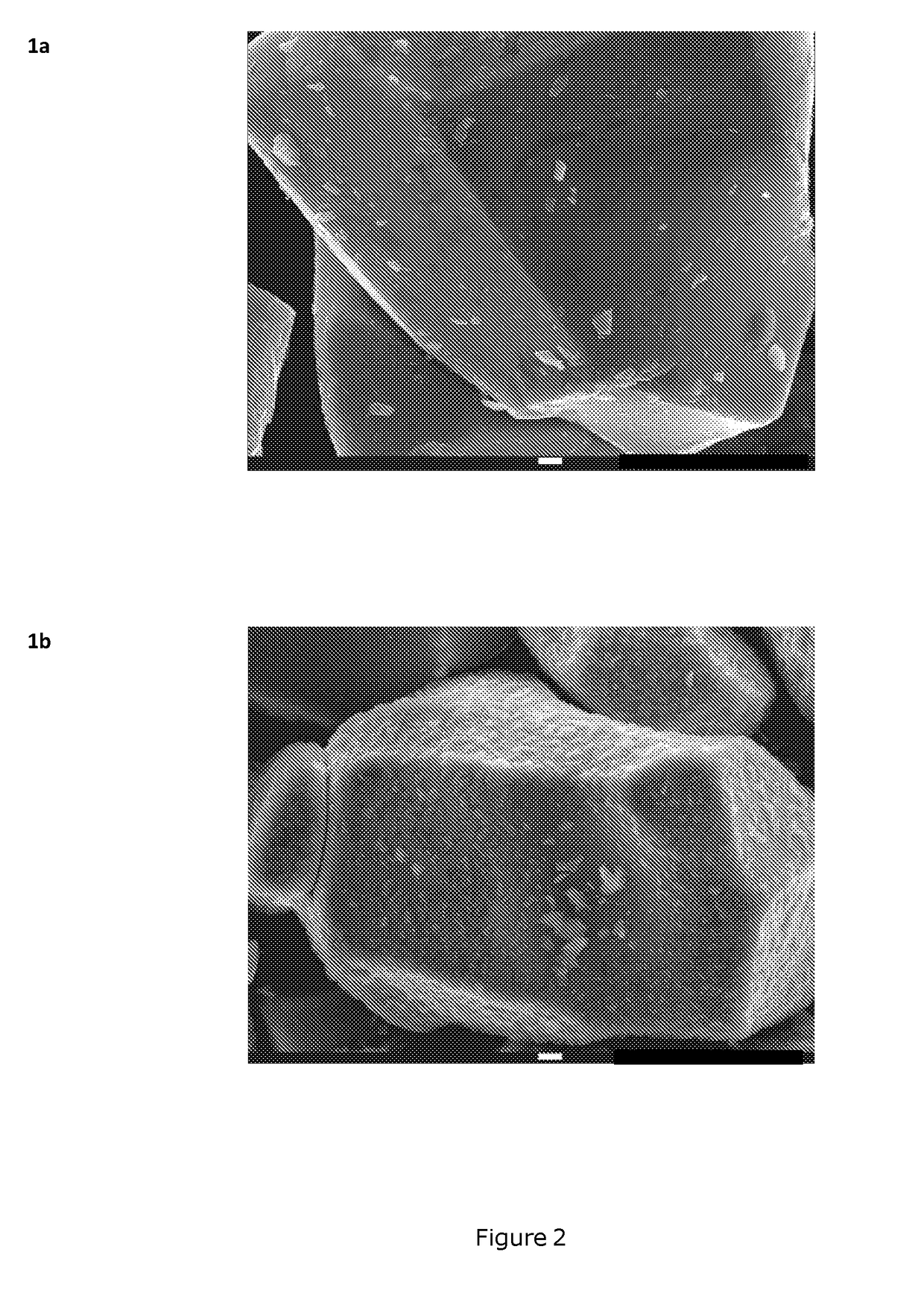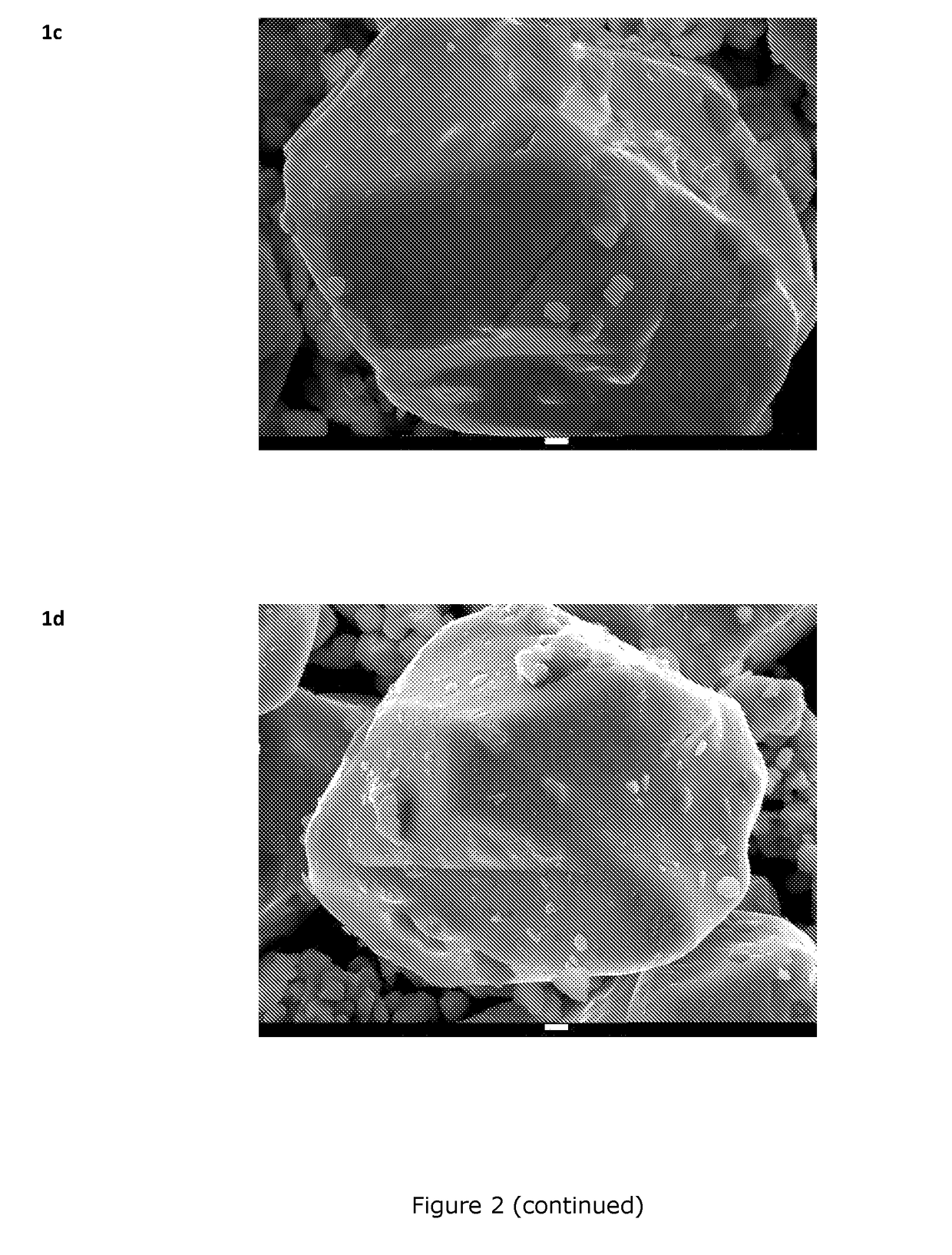Cobalt-Based Lithium Metal Oxide Cathode Material
a lithium metal oxide and cathode material technology, applied in the field of lithium cobalt-based oxide having a layered structure, can solve the problems of limited industrial applicability of these two approaches, rapid capacity loss, and limited application of the latter rou
- Summary
- Abstract
- Description
- Claims
- Application Information
AI Technical Summary
Benefits of technology
Problems solved by technology
Method used
Image
Examples
example 1
[0105]This example will demonstrate that materials comprising LiCoO2-based particles bearing an electron insulating surface and comprising ion-conducting crystalline Li3PO4 have superior electrochemical behavior compared to state of the art lithium cobalt oxides.
[0106]Sample preparation: Ti and Mg doped LiCoO2-base materials are prepared at mass-production scale using a mixture of Li2CO3, Co3O4, TiO2 and MgO in a Li / Co / Ti / Mg molar ratio of 1.075 / 0.9967 / 0.0008 / 0.0025. The product is placed in a ceramic tray and sintered at a temperature of 990° C. for 10 h in air. The product is then crushed and classified resulting in a median volumetric particle size D50 of about 28 μm, as shown on FIG. 1. The pressed density of the powder is 3.90 g / cm3. The as-prepared sample is referred to as Core_1. SEM images of Core_1 samples are shown on FIG. 2 (reference: 1a).
[0107]Next, 1 mol % Li3PO4 is applied on the surface of Core_1 as follows: an amount of powder of Core_1 is immersed in de-ionized wat...
example 2
[0126]This example will demonstrate that materials comprising LiCoO2-based particles bearing an electron insulating surface and comprising ion-conducting crystalline Li3PO4 have a superior electrochemical behavior compared to electron insulating-only materials.
[0127]Sample preparation: Ti and Mg doped LiCoO2-base materials are prepared at mass-production scale using a mixture of Li2CO3, Co3O4, TiO2, MgO in a Li / Co / Ti / Mg molar ratio of 1.060 / 0.9967 / 0.0008 / 0.0025. The product is placed in a ceramic tray and sintered at a temperature of 990° C. for 10 h in air. The product is then crushed and classified which resulted in a median particle size in volume D50 of about 18 μm. The as-prepared sample is referred to as Core_3. FIG. 6a shows the SEM image of Core_3.
[0128]Next, 1.85 mol % Li3PO4 is applied on the surface of Core_3 as follows: first, lithium hydroxide monohydrate and phosphoric acid (H3PO4 produced by Wako Chem. Ltd.) is added to deionized water to provide a 10 wt % LiH2PO4 aqu...
example 3
[0135]This example will demonstrate that the morphology of the Li3PO4 coating applied onto the surface of LiCoO2-based particles is affected by the selection of the annealing temperature.
[0136]At temperatures below 850° C. the LiCoO2-based particles are covered with a continuous Li3PO4 layer. At temperatures above 850° C. the LiCoO2-based particle surface comprises Li3PO4 islands; the presence of a continuous protective film between Li3PO4 islands is presumed from the very smooth particle surface in-between the islands.
[0137]2 mol % Li3PO4 is applied on the surface of a 25 μm LiCoO2-based core. FIG. 11 shows the particle surface before (Sample 3a) and after Li3PO4 coating (Sample 3ac). 100 g of the as-prepared mixture is then annealed at 700° C. for 10 h in dry air and cooled down to room temperature. The product is milled and classified, resulting in sample 3b. Sample 3c is prepare in a similar way as sample 3b, except that the annealing temperature is set to 800° C. Sample 3d is p...
PUM
 Login to View More
Login to View More Abstract
Description
Claims
Application Information
 Login to View More
Login to View More - R&D
- Intellectual Property
- Life Sciences
- Materials
- Tech Scout
- Unparalleled Data Quality
- Higher Quality Content
- 60% Fewer Hallucinations
Browse by: Latest US Patents, China's latest patents, Technical Efficacy Thesaurus, Application Domain, Technology Topic, Popular Technical Reports.
© 2025 PatSnap. All rights reserved.Legal|Privacy policy|Modern Slavery Act Transparency Statement|Sitemap|About US| Contact US: help@patsnap.com



